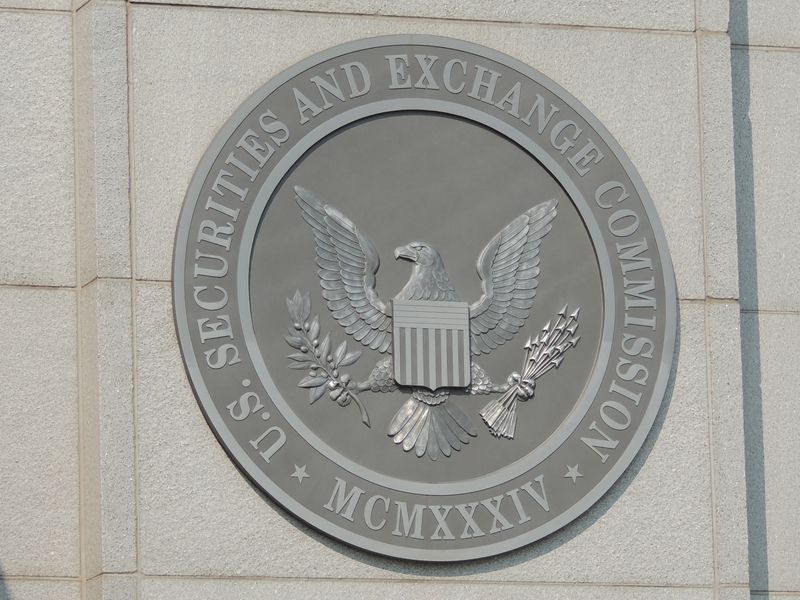Elections, SEC Cases, DOJ Cases: What Crypto Regulation May Bring in 2024
The CoinDesk policy team is scattered throughout the world; in the final edition of this newsletter, each member explains what they’re watching in 2024 in the world of crypto regulations. Happy holidays, and we’ll see you next year!
You’re reading State of Crypto, a CoinDesk newsletter looking at the intersection of cryptocurrency and government. Click here to sign up for future editions.
Buckle up, folks
The narrative
As is now this newsletter’s annual tradition, CoinDesk’s regulation team explains what we’re paying attention to in 2024.
Why it matters
Next year will be busy. Crypto is having a resurgent moment, and this past year’s conviction of Sam Bankman-Fried and guilty plea from Changpeng Zhao, the potential approval of a spot bitcoin exchange-traded fund and just a general upswing in the market are sure to have a lot of people feeling hopeful about this industry’s future. But lawmakers and regulators aren’t likely to spend less time on crypto issues either.
Breaking it down
Nikhilesh De: There’s no rest for the weary. Though a lot happened in 2023, including an entire criminal trial, next year promises to be much busier. I’m interested in five main categories of events or activities that may play out next year: Court cases, elections, regulatory agency actions, legislation and the broader crypto market.
Obviously the U.S. Securities and Exchange Commission has had a pretty active year, with lawsuits against Coinbase, Kraken and Binance/Binance.US over the past 12 months (really the past seven). While the regulator’s case against Ripple shows us that it may take a while for these cases to resolve, we’ll still start seeing how the courts view the arguments being made.
The Commodity Futures Trading Commission will likewise have an interesting role next year. CFTC Chair Rostin Behnam has said on a number of public occasions that he’s proud of how many enforcement actions his agency’s taken, and that’s not likely to let up next year.
Beyond that, there’s also the national security and criminal cases. USA v. Avi Eisenberg, Roman Storm, Alex Mashinsky, Changpeng Zhao and even Samuel Bankman-Fried (round 2) will see federal prosecutors raise some interesting legal questions for the crypto industry.
Bankman-Fried and Zhao both have sentencing hearings coming up in the first half of the new year. Zhao is looking at 10-18 months or so when he’s sentenced in late February 2024 after pleading guilty to one charge of violating the Bank Secrecy Act as the former CEO of Binance.
Bankman-Fried, of course, faces a much longer sentence after a jury convicted him on seven different charges in early November. He also faces a potential second trial. We may not know for a few more months whether the DOJ intends to proceed on the second trial, which is currently scheduled to begin in early March. If prosecutors move forward, Bankman-Fried’s sentencing, currently set for later in March, will probably be delayed.
The Eisenberg and Storm cases will be more interesting, just from the legal theories we’re going to see discussed.
Eisenberg, who was arrested a year ago today, is accused of commodities manipulation and fraud after executing a “trading strategy” that resulted in Mango Markets losing $114 million. His trial is currently scheduled for April.
Storm, meanwhile, faces charges of conspiracy to operate a money transmitter, facilitate money laundering and sanctions evasion tied to his work as a developer on Tornado Cash, a crypto mixing service.
The bankruptcies are moving closer to resolutions, and we’ll continue watching them to see what exactly these companies’ former users will get back.
We’re going to be watching (and reporting on) elections in the U.S., European Union, India, Indonesia and possibly the UK next year. Each of these elections will be important – even if the winners don’t have explicit positions on cryptocurrency issues, the department or ministry heads they appoint and the laws they push for will obviously have an impact on the crypto sector.
In the U.S., we’re once again looking at elections at every level of government, from state and local issues to the House of Representatives and Senate to the office of the U.S. president. Campaign season is already in full swing, but within the next few weeks we’ll start to see primary candidates dwindle.
It’s still not clear to me that crypto will really be an issue for lawmakers in the U.S. beyond being generic talking points but we’ll see.
No major crypto legislation advanced out of Congress this year, though stablecoin and market structure bills made more progress than any previous legislation. We’ll likely see these bills continue to be discussed this upcoming year, though of course the election will be a major wrinkle.
The people to watch are Congressman Patrick McHenry (R-N.C.), the House Financial Services Chair who’s not running for reelection; Congresswoman Maxine Waters (D-Calif.), the House Financial Services Ranking Member; Senator Sherrod Brown (D-Ohio) the Senate Banking Committee Chair, who is running for reelection; and Senator Tim Scott (R-S.C.), who briefly ran for president.
McHenry has already told Politico he intends to push forward with crypto legislation during his final term. Still, he’s up against a clock: At some point, Congress is going to be more focused on elections and campaigning than on their work in D.C.
Similarly, we’ll see if federal regulators engage in further rulemaking, as well as which outstanding proposed rules they adopt.
Of course, we can’t ignore the fact that prices are up, people are booking paper returns (and some actual returns) and that there’s a lot of excitement around. Whether things are different this time in terms of resilient platforms or market structures, and whether people are better protected against losing billions of dollars, will both affect how regulators worldwide look at this industry.
This time last year, I predicted that questions about user data on bankrupt platforms will get more airtime; that the SEC would take more actions, that I wouldn’t expect much in terms of legislation and that regulators would have a reaction to 2022’s collapse. I think some of these predictions held up pretty well: The SEC sued a number of exchanges and legislation advanced out of committee but has yet to clear any major body of Congress. I don’t think enough time has passed for us to clearly see the regulatory response to the collapse of FTX and other companies, but lawmakers are clearly thinking about these issues.
Sandali Handagama (EMEA): In my heads-up for 2023, I said we’d hear quite a bit about global norms for crypto. Well, the watchdogs really came through – and with gusto.
The Financial Stability Board (FSB) published its long-teased policy recommendations for crypto. In a separate paper with the International Monetary Fund (IMF), it also declared wholesale crypto bans just won’t work. But that hasn’t translated into easier rules for the sector, which saw the law catch up to several of its former champions this year.
Case in point: crypto’s theoretically less volatile subset, stablecoins, are getting some global-level tough love. International securities regulator IOSCO in its policy recommendations rejected industry pleas for stablecoins to receive special treatment. Banking regulator BCBS followed that up with plans to tighten requirements for stablecoins to qualify as safer assets for bank exposures. We’ll see a lot more tweaking or introducing of new standards for crypto and stablecoins next year.
If 2023 was the year of crypto regulation, 2024 will see some of those rules in action. The European Union’s landmark Markets in Crypto Assets (MiCA) regulation is set to come into effect next December after its finalization this year. In 2024, companies and EU member states will race to become MiCA compliant. As my former colleague Jack Schickler predicted, companies have indeed been playing some hopscotch, trying to pick the best EU country to settle down in time for the rules.
I’ll also be watching the EU’s parliamentary elections in 2024. Although MiCA’s through, there are plenty more relevant frameworks in the making, including one for the metaverse and another for a digital euro.
We’ll get a better feel for fresh 2023 regulatory regimes in aspiring crypto hubs Dubai and Hong Kong. We’re also expecting more legislation from several jurisdictions including Turkey and South Korea.
Let’s just say that, going into a new year and a new bull run, regulators worldwide have tried to make sure to be in a better position to tell crypto how to stay in line. But my most confident prediction is that campaigning by central banks and standard-setters to convince the masses that central bank digital currencies (CBDC) are better for payments than private crypto will continue into next year. Safe bet.
Jesse Hamilton (U.S.): From the vantage point of Washington, D.C., my predictions for crypto’s 2024 will be wholly unsatisfying for those eagerly awaiting progress.
The best the industry can likely expect is some resolution in its court clashes with the Securities and Exchange Commission (SEC), though the agency is probably going to hammer the sector with targeted new policy. We also have a strong chance of seeing a crypto legislation surge set a new high-water mark in 2024, with passage in the House of Representatives of some digital assets regulation.
Take my predictions this year with some caution, though, because last year I’d suggested the “future could be decided” in 2023 on whether crypto could move forward in the U.S. as a widespread, commonly exchanged asset. In fact, nothing much was decided — except that the SEC isn’t always right, according to federal judges in multiple cases.
Though I’d predicted that Congress would probably take months to “find common ground on crypto,” that ground was never located on the Senate side. A prediction about 2023 would have been better to have read: Expect policy chaos, legal clashes, massive enforcement actions and a small amount of legislative progress.
While an outgoing Rep. Patrick McHenry (R-N.C.), the chairman of the House Financial Services Committee, may find a way to set his crypto legacy by winning House passage for crypto stablecoin regulation, the Senate has been reluctant about doing business on digital assets bills. Anybody who can see into the heart of Sen. Sherrod Brown (D-Ohio), the chairman of the Senate Banking Committee, and read his crypto intentions, please let me know.
While sideshows like the central bank digital currency (CBDC) debate continue, the most impactful policy moves from the U.S. government could be in finalization of truly consequential rules from the SEC and the Internal Revenue Services that would specifically regulate aspects of the U.S. industry for the first time. More than one of these initiatives spell devastation for decentralized finance (DeFi) if they emerge as they were proposed.
As 2024 looms, the industry is finding it more pleasant to focus on the likelihood of a spot bitcoin exchange-traded fund (ETF) getting an SEC nod. But the SEC has multiple crypto rules loosely targeted for April, according to its agenda, including one that would expand the definition of exchanges to include crypto platforms and another that would order investment advisers to keep their customers’ crypto assets with “qualified custodians” — not the current range of industry exchanges, according to SEC chief Gary Gensler. (Though these rules could eventually be challenged in court, just like everything else.)
The takeaway: If you enjoyed 2023 (sicko!), you’ll probably really like 2024.
Amitoj Singh (India): The world’s largest democracy goes to elections next year and by June 2024, based on current state election trends and polls, Narendra Modi will return as India’s Prime Minister for a third term. With it, the same policies represented by his party, the Bharatiya Janta Party, are likely to be retained. That would mean India’s controversial and stiff crypto taxation policy may not see a change in 2024. A think tank study supports reducing the taxes – a 30% tax on crypto profits and a 1% tax deducted at source (TDS) on all transactions. The crypto industry has advocated for changes too. But Modi’s government hasn’t given any indication of wanting to change that policy. As for a crypto or Web3-specific legislative bill, Jayant Sinha, one of India’s senior lawmakers from Modi’s party overseeing the financial evolution of the nation, has already said that won’t happen anytime soon and perhaps not until mid-2025. As a result, in 2024, India’s crypto enthusiasts may not have much hope for a reduction in taxation policies, but they will be looking out for piecemeal measures for the Web3 and blockchain industry to be folded into the nation’s further push toward digitizing its future. Modi’s government has already made encouraging steps for the space while maintaining a separate stiff policy for crypto assets. I’ll be keeping an eye on two separate budget presentations in India’s parliament, one before the election and one after, to see if India’s prioritization of framing a crypto framework for the globe as the president of the Group of 20 (G20) nations in 2023, becomes its own domestic legislative priority. As suggested in 2022, I watched the Modi government’s budget presentations in 2023 and its G20 work closely. I also watched whether the Indian central bank’s hopes to launch a full-scale central bank digital currency (CBDC) would come true. They didn’t. However, wholesale and retail pilots have shown promising results and their progress, including concerns around privacy, maybe the focus of 2024.
Camomile Shumba (UK): Last year I said that the U.K. government needed to provide more clarity on how it wants to regulate crypto. Now a year on I can say that the government’s vision for the burgeoning sector has become clearer.
A lot of legislation has passed, meaning the U.K. is moving forward with its plans to be a crypto hub – a desire that according to the U.K. government comes hand in hand with regulation.
The Financial Services and Markets Act (FSMA) – which gave regulators more power over the crypto sector – passed into law in June along with a crime bill that will help law enforcement agencies seize crypto.
The FCA enforced its promotions rules for crypto – which meant that overseas firms could not reach out to U.K. clients without the FCA’s greenlight but this led to crypto firms leaving the country. Firms will be looking to adapt to these rules.
The U.K. will continue to struggle with managing its crypto hub ambition with the FCA’s tendency to be strict. Plus, the U.K.’s staged approach where it deals with one aspect of crypto at a time means that different aspects of the crypto market will be left in limbo until regulations come out. The digital pound consultation results are still yet to come out.
With the election likely to occur next year – and Labour being a popular candidate – another question on everyone’s lips is – if Labour were to take over – what would they change?
Elizabeth Napolitano (U.S.): The cryptocurrency industry has a busy (and seemingly brighter) year ahead of it. Shortly after ringing in 2024, we can expect to see the SEC approve its first swath of spot bitcoin ETFs, which could impel institutional investors to pour big bucks into the digital assets space. News of the approvals may also stir up public interest in virtual tokens, pushing them further from the fringes of finance to center stage.
Across the Atlantic, next year will also prove an exciting one for crypto. In late 2024, we’ll finally see MiCA, the European Union’s (EU) regulatory framework for crypto, take effect. The legislation effectively bans algorithmic stablecoins (think: DAI), which are often used as collateral for borrowing and lending across decentralized exchanges (DEXs) such as Curve Finance and Uniswap. This facet of the framework will likely have second-order effects on the growth of decentralized finance (DeFi) across the EU’s 27 member states, stymieing Europeans’ engagement in a vastly profitable, if perilous, sector of the crypto industry.
Editor’s note: Are you looking out for something specific next year at the intersection of regulations, politics and crypto? Shoot me a note with your name or handle and interest in the space and your note may appear in a future edition of State of Crypto.
Stories you may have missed
This week
:format(jpg)/cloudfront-us-east-1.images.arcpublishing.com/coindesk/RWQBB6ZAIBH2RDH56HC24WHWYE.png)
-
There better not be anything happening this week. I’m looking at you, federal regulators.
Elsewhere:
-
(
Fortune
) Fortune’s Leo Schwartz took a look at an interesting dynamic between the New York Attorney General’s Office, which is trying to build a larger role in regulating crypto, and the New York Department of Financial Services, the state regulator currently tasked with overseeing the industry,
earlier this year
. With its lawsuit against Gemini, Genesis and Digital Currency Group, the NYAG’s office looks like it’s still trying to consolidate some greater authority over digital currency transactions.
-
(
The New York Times
) The Times dug into court filings in a case where a New York University student also happens to own a majority share in a bitcoin mining operation. It’s an interesting look at how the facility was purchased and how the funds were moved.
-
(
The Wall Street Journal
) The Journal profiled Yi He, the Binance co-founder who remains at the top of the platform after CZ was forced to step down last month.
:format(jpg)/cloudfront-us-east-1.images.arcpublishing.com/coindesk/ZCCFUUXWGFES3OPZAONKDBDFE4.png)
If you’ve got thoughts or questions on what I should discuss next week or any other feedback you’d like to share, feel free to email me at nik@coindesk.com or find me on Twitter @nikhileshde.
You can also join the group conversation on Telegram.









